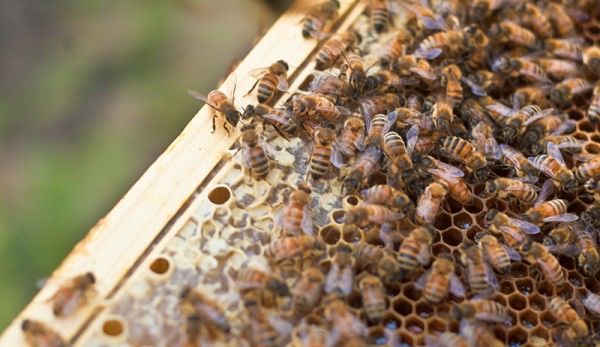
Summer is prime beekeeping time. Flowers are abundant and everything is in bloom. The urge to pull off the hive top and snap open the inner cover can be too tempting to resist, especially for new beekeepers. (That sound of the proplis cracking as the hive tool separates the cover from the top super? So thrilling!) During my first summer as a beekeeper, I wanted to do an inspection every few days. I was so enamored by the bees that I needed to know what they were up to at all times: Could I find the queen? How much honey were they making? What color pollen are they bringing in today?
But while my intentions were good, these weren’t always welcome visits to the bees. In fact, they were intrusions. I was interrupting (and at times, delaying), crucial honeybee work. What I learned over that first summer is that healthy, thriving hives don’t need regular, weekly inspections—they need timely interventions to suit their growing needs throughout the whole year. I’m not saying to ignore them all summer, but what does this mean for you, the beekeeper? Keep good records, keep track of your hive’s progress in writing and refer to it before inspections, and note significant events or items and the time of year you saw it. Don’t just go into a hive for the sake of looking—have a goal, an intention, in mind. Work you plan to do to help your colonies. Otherwise, leave them be for a while. Why? Because …
1. They’re making honey.
In the summer, honeybees aren’t thinking about how grand life is. They’re working their tiny, fuzzy butts off to pack away as much as possible for winter. All the honey they’re bringing into the colony, storing in cells and capping with wax is money in the bank for a rainy day. It’s what they’ll survive on come winter. It’s their life insurance policy. When a heavy nectar flow is happening in your area (the best reason to keep track of weather patterns for your region), don’t disrupt them. Leave them be for the duration of the flow. Most hives need 40 to 60 pounds of honey to survive the winter, and it’s a good year if they get all of that on their own. If it’s a great year, anything beyond that number becomes “surplus”—and up for grabs by the beekeeper.
2. They’re making babies.
Well, the queen is making the babies; the workers are raising them. Either way, the key to a colony’s success is in their numbers. “Strong” hives are often measured in their size. And the strength of a hive directly effects their ability to gather nectar and store honey. A honeybee’s life cycle in the summer is so strenuous: She only lives about three to four weeks. She literally works herself to death. The more worker bees there are in the hive, the more foragers there are bringing in nectar, and the more honey there will be for them (and you).
3. They’re hot—and so are you!
Does heat make you cranky? While honeybees love to be warm—and they need rather high temperatures to properly raise brood—extreme heat can push anyone to the edge. For the honeybee, the smell of broken combs and dripping honey can agitate a very active colony. As honey stores build up near the dog days of summer, a colony can become very protective of its stash. Combine that with a sweaty beekeeper (smelling an awful lot like a forest creature coming to steal honey), and you may have an uncomfortable situation on your hands for all. Leave them be until the heat breaks, and you’ll all be friendlier for it.




